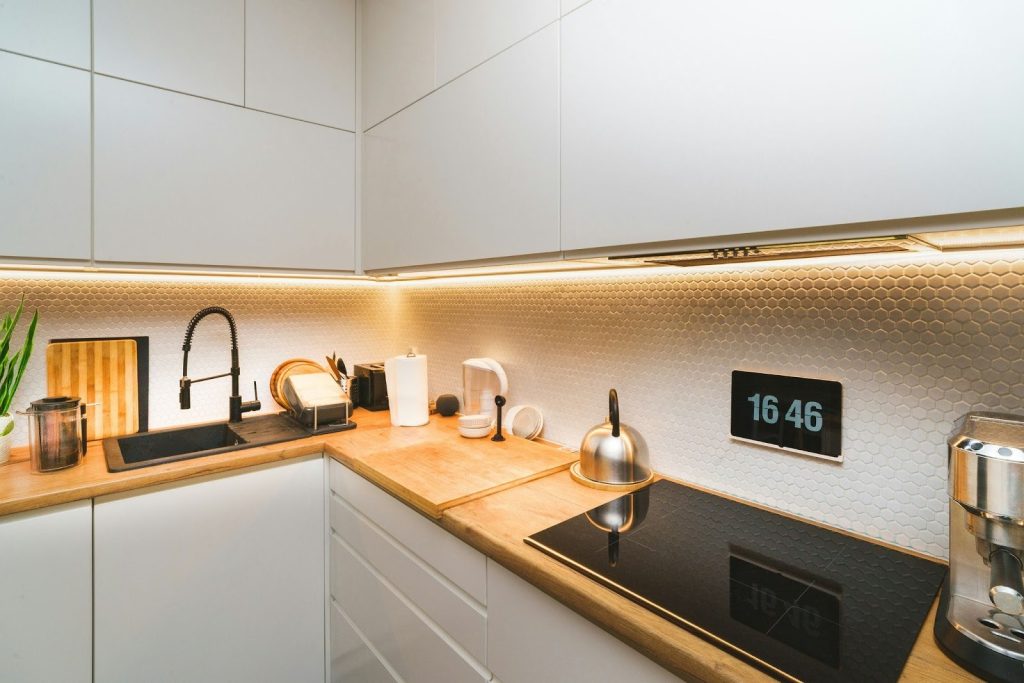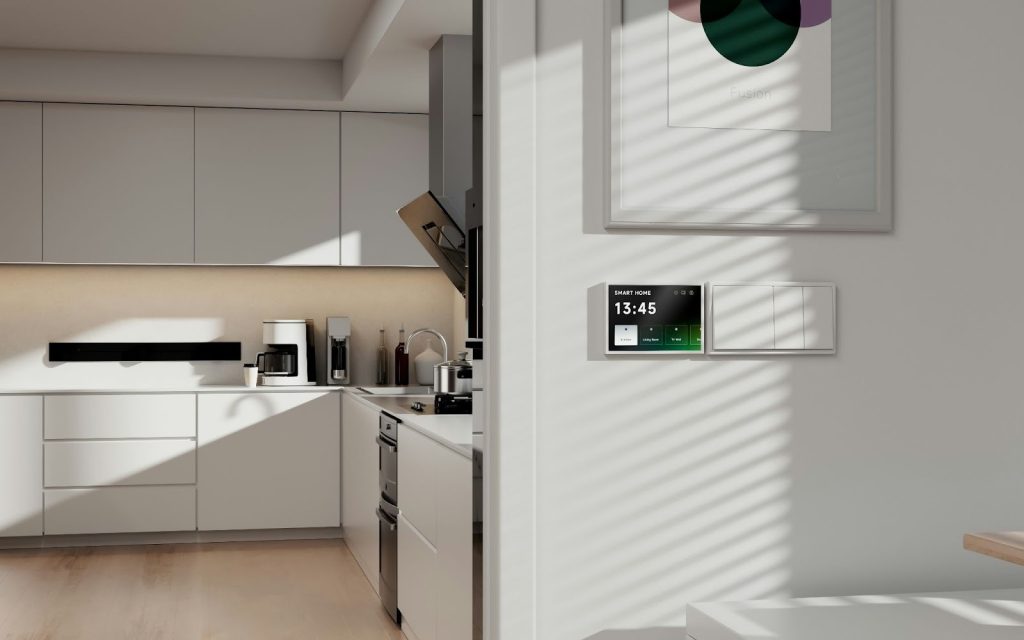Smart home energy management is rapidly evolving, driven by advancements in automation, real-time monitoring, and AI-powered optimization. In 2025, homeowners are adopting connected systems that not only reduce utility bills but also operate as intelligent digital ecosystems within the home. This evolution is changing how residential spaces consume, distribute, and interact with energy. It blends construction frameworks with high-level IT, IoT, and automation technologies.
Modern systems rely heavily on IoT connectivity, sensors, data modeling, and cloud-based analytics. These technologies enable the home to measure energy usage at a granular level. They perform automated decisions based on learned patterns. As technology matures, energy management becomes less about device control and more about system intelligence.
Whether upgrading an older home or designing a new one, homeowners now expect technology to play an active role in comfort, sustainability, and long-term efficiency. Today’s smartest homes combine sensors, analytics, and automated decision-making. They optimize energy use without constant human involvement. This article explores the systems behind modern energy management, the benefits they deliver, and how construction professionals help integrate these technologies into real-world home environments.
Key Takeaways
- Smart home energy management integrates automation and AI to optimize energy use and reduce costs in residential environments.
- Key components include real-time energy monitoring, smart thermostats, automation in lighting, and integration with solar and battery systems.
- Homeowners should consider their current infrastructure and choose compatible devices for seamless integration.
- The benefits include reduced utility bills, increased comfort, and support for a sustainable future.
- Smart home energy management represents the future of housing, preparing homeowners for rising energy demands and costs.
Table of Contents
- Understanding What Smart Home Energy Management Really Means
- Key Components of a Smart Home Energy Ecosystem
- Benefits of Smart Home Energy Management
- What Homeowners Should Consider Before Implementing These Systems
- Smart Energy Management for Renovations and New Construction
- Practical Steps for Homeowners to Get Started
- Looking Ahead: The Future of Smart Home Energy Management
- Final Thoughts
Understanding What Smart Home Energy Management Really Means
Smart energy management refers to a connected ecosystem of devices and systems that monitor and optimize household energy use. Instead of relying on manual adjustments, the home intelligently automates decisions. These include when to run heating and cooling, how to allocate electricity, and which systems can adjust dynamically based on real-time conditions.
In 2025, the most advanced systems unify technologies such as automated HVAC, lighting, solar energy production, battery storage, and EV charging. Homeowners are no longer interested in isolated gadgets. Instead, they want systems that work together to reduce energy consumption, increase comfort, and help prepare for a more sustainable future.

Key Components of a Smart Home Energy Ecosystem
Real-Time Energy Monitoring
Energy dashboards and smart meters give homeowners detailed insights into their electricity use. With appliance-level monitoring, it becomes easy to identify which systems consume the most power and which habits lead to unnecessary waste. These insights help homeowners make informed decisions. They adjust behaviors for lower monthly bills.
Smart Thermostats and Climate Control
Smart thermostats now utilize geofencing, adaptive scheduling, and predictive learning. They automatically regulate temperature based on occupancy patterns, weather forecasts, and personal comfort preferences. Because HVAC systems account for the largest share of home energy use, optimizing this area offers some of the highest immediate savings.
Smart Lighting and Automated Controls
LED lighting paired with motion sensors, dimmers, and daylight-responsive controls reduces electricity use throughout the home. Whether turning lights off automatically when a room is unoccupied or adjusting brightness based on natural light, automation improves efficiency with minimal homeowner involvement.
Solar, Battery Storage, and EV Integration
With solar adoption rising, homeowners are increasingly pairing panels with on-site battery storage and EV chargers. These systems integrate with home energy platforms to shift usage away from peak hours, store excess solar energy, and ensure electric vehicles charge during off-peak times. This creates a more resilient and cost-effective energy strategy.
Together, these components form a unified energy ecosystem. This allows the home to operate more intelligently and respond dynamically to changing conditions.

Benefits of Smart Home Energy Management
Smart energy systems can support demand response programs by automating load shifting during peak hours. This helps homeowners reduce strain on the grid while lowering long-term energy costs.
Reduced Utility Bills
The most immediate benefit is cost savings. Smart systems reduce unnecessary energy use and help homeowners shift consumption to lower-cost hours. Automated HVAC systems alone can significantly lower monthly energy expenses, especially when combined with zoning and temperature optimization.
Increased Home Comfort and Safety
Smart controls keep indoor temperatures balanced and consistent. Automated fans, air purifiers, and humidity sensors help maintain healthier indoor air quality. Lighting and climate systems adapt automatically, ensuring a more comfortable and personalized environment.
Sustainability and Future-Proofing
Energy-efficient homes support more sustainable living. Reducing electricity use helps lower carbon footprints. Integrating renewable energy prepares homeowners for a future where electrification, battery storage, and grid-interactive homes are standard.

What Homeowners Should Consider Before Implementing These Systems
Home Age, Layout, and Existing Infrastructure
Older homes may require electrical upgrades or HVAC improvements before integrating modern systems. While newer homes often have the wiring and network infrastructure needed for automation, older homes might need insulation, electrical panel updates, or ventilation improvements. These updates ensure the full benefit from smart energy technologies.
Choosing Compatible Devices and Platforms
Interoperability is critical. Many homeowners choose platforms that support broad compatibility, such as Matter, Google Home, Apple HomeKit, or Samsung SmartThings. A cohesive system ensures that devices communicate effectively, reducing technical issues and improving long-term usability.
Working With the Right Professionals
During major renovations or electrical upgrades, many homeowners partner with experienced building professionals such as Elevate Construction Group. Their expertise helps ensure that wiring, insulation, and structural systems can support modern smart energy technologies safely and effectively.
For homeowners adding advanced smart-home systems, Golden State Design & Engineering offers valuable guidance on electrical capacity, structural requirements, solar-ready integration, and system layout. They provide the engineering plans and permitting support needed to ensure every upgrade functions efficiently and meets modern safety standards.

Smart Energy Management for Renovations and New Construction
Designing Energy Efficiency into a Remodel
Renovations create opportunities to install smart breaker panels, upgrade wiring, integrate solar-ready infrastructure, or improve insulation. Planning these elements early prevents future rework and ensures the home can support more advanced systems later.
Whole-Home Energy Optimization for New Builds
For new construction, builders like Capital Construction often incorporate smart energy infrastructure directly into the design phase. This gives homeowners a stronger foundation for long-term efficiency and smoother integration of future technologies.
The Rise of AI-Driven Home Automation
AI-driven automation is becoming a defining feature of modern homes. Systems now learn habits, predict usage patterns, and optimize schedules without requiring homeowner input. This minimizes energy waste while maintaining comfort and system reliability.

Practical Steps for Homeowners to Get Started
- Step 1: Evaluate Your Current Energy Usage: Before investing in smart technologies, homeowners should gather baseline data. Many utility companies provide energy reports, and smart meters offer real-time tracking for more precise monitoring.
- Step 2: Prioritize High-Impact Upgrades: Smart thermostats, LED lighting, and improved insulation often deliver immediate returns. HVAC zoning, upgraded ductwork, and weatherization improvements can further boost efficiency.
- Step 3: Plan for Future Add-Ons: Once the essentials are in place, homeowners can explore advanced technologies such as solar panels, battery storage, heat pump systems, and EV charging integration. Designing these upgrades with flexibility in mind ensures smoother adoption over time.
Looking Ahead: The Future of Smart Home Energy Management
The next several years will bring more advanced systems capable of automating decisions, forecasting energy needs, and interacting directly with the grid. As electrification expands, homeowners who invest in these systems today will be well-positioned for rising utility rates and increasing technology demands. Innovations in predictive modeling, advanced automation, and grid-interactive technologies will enable homes to anticipate energy needs rather than simply react to them.

Final Thoughts
Smart home energy management is shaping the future of residential living. By combining automation, data insights, and connected systems, homeowners can create comfortable, efficient, and future-ready homes. Whether upgrading an existing space or planning a new build, thoughtful integration of modern energy technologies can reduce costs, enhance comfort, and support a more sustainable lifestyle.











